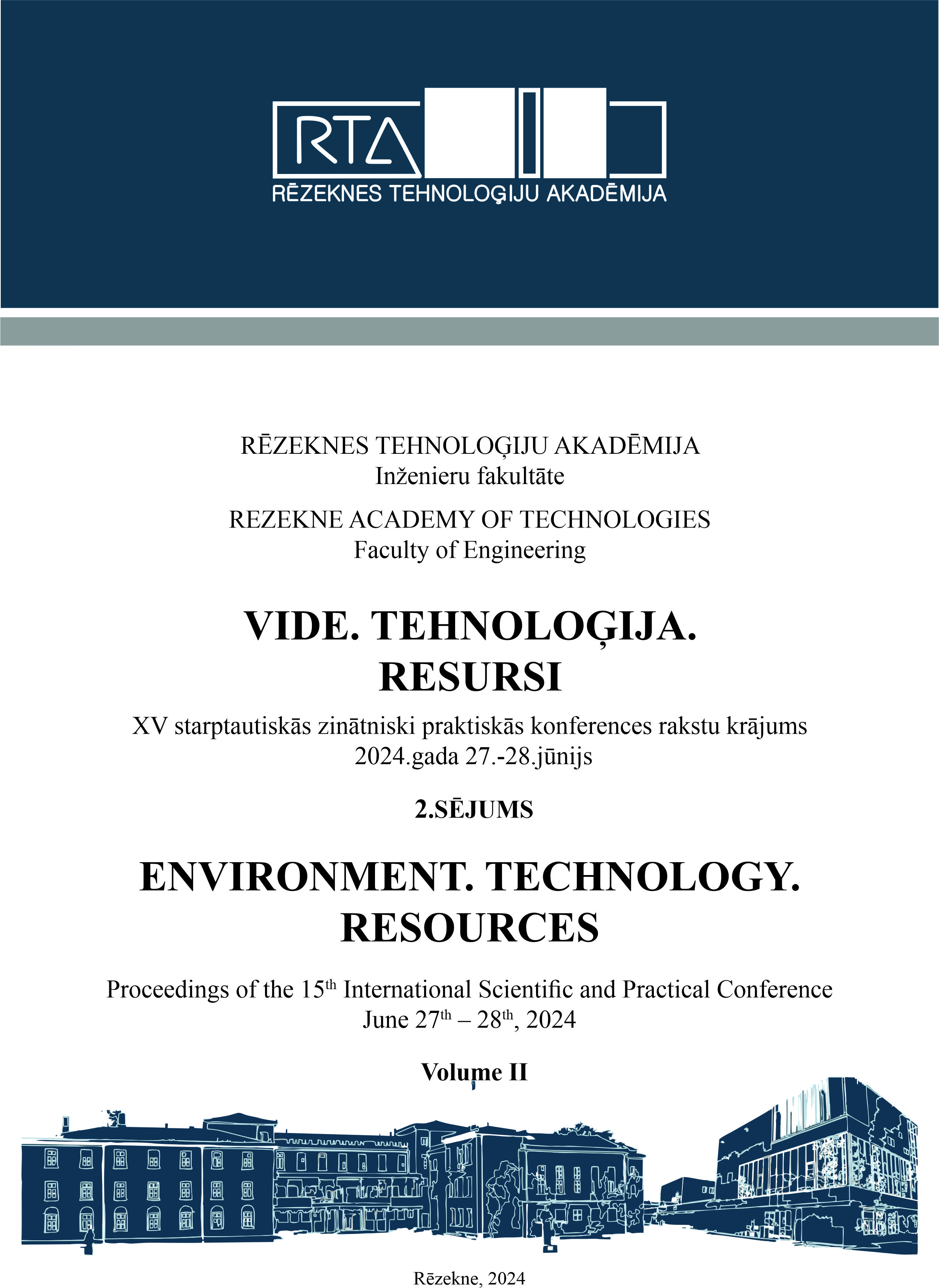DIGITAL TRANSFORMATION OF HIGHER EDUCATION: INTEGRATING MULTIMEDIA SYSTEMS INTO THE STUDY PROCESS
DOI:
https://doi.org/10.17770/etr2024vol2.8017Keywords:
digital transformation, higher education, interactive study process, multimedia systemsAbstract
Higher education and digital transformation are two essential areas that interact and influence each other today. The rapid development of technology requires higher education institutions to provide students with the digital skills needed in the labor market and everyday life. At the same time, educational institutions are embracing digital solutions to improve the efficiency of the learning process and offer new opportunities for students and lecturers.
The digital transformation of higher education covers many areas, including integrating multimedia systems in the study process. This process refers to the use of digital technologies to enhance the learning experience by making it more interactive, accessible and effective. The integration of multimedia systems can include several aspects, including interactive classes, seminars and lectures on various collaborative platforms, interactive learning materials (e.g., interactive e-books, videos with 3D animations or simulations, virtual or augmented reality solutions), e-assignments and tests, automated assessment systems (data analysis and learning analytics). Also, multimedia systems can help universities to automate study administrative processes.
The aim of the study is to analyse the solutions for integrating multimedia systems in higher education, their potential for digital transformation of study courses and for increasing the efficiency of the study process.
The study used both qualitative and quantitative methods for data extraction and analysis. The study uses a case study approach - it evaluates the digitisation initiative of 12 distance and face-to-face bachelor level study courses of Turiba University, integrating multimedia system solutions for asynchronous learning process into the course content and form. The case study analysis includes a student evaluation survey of the study courses through an online questionnaire, semi-structured interviews with course developers and lecturers, as well as document analysis.
As a result of the research, the authors conclude that the integration of multimedia systems in studying study courses provides additional support to students in strengthening their self-directed learning skills. At the same time, under the influence of the digitalization of the study process, the space for both asynchronous and direct communication between lecturers and students, for the development of soft skills of students, as well as for the formation of practical knowledge and competences, increases the efficiency of the study process and the quality of education.
References
E. Lamarre, K. Smaje and R. Zemmel, Rewired: McKinsey Guide to Outcompeting in the Age of Digital and AI, Wiley, 2023.
G. Vial, Understanding Digital Transformation: A Review and a Research Agenda, The Journal of Strategic Information Systems, Vol. 28, Issue 2, June 2019, pp. 118-144. https://doi.org/10.1016/j.jsis.2019.01.003
R. A. Ellis and P. Goodyear, Models of learning space: integrating research on space, place and learning in higher education, British Educational Research: Review of Education, 2016. https://doi.org/10.1002/rev3.3056
S. Grajek and B. Reinitz, Getting Ready for Digital Transformation: Change Your Culture, Workforce, and Technology, EDUCAUSE Review, 2019. Available: https://er.educause.edu/articles/2019/7/getting-ready-for-digital-transformation-change-your-culture-workforce-and-technology [Accessed February 18, 2024].
Global Higher Education Market Size By Student Demographic, By Educational Services, By Institution Type, By Geographic Scope And Forecast, 2024. Available: https://www.verifiedmarketresearch.com/product/global-higher-education-market-size-and-forecast/ [Accessed February 20, 2024].
J. Schneider, The Transformative Power of Multimedia in Higher Education Online Course Designe, 2024. Available: https://blogs.luc.edu/techtips/2024/02/07/the-transformative-power-of-multimedia-in-higher-education-online-course-design/ [Accessed February 20, 2024].
K. Martinosane and A. Pipere (zin.red.), Zinātniskās darbības metodoloģija: starpdisciplināra perspektīva, Rīga: RSU, 2021.
S. Kushner, Evaluative Research Methods: Managing the Complexities of Judgment in the Field, Information Age Publishing Inc., 2017.
M. Saunders, C. Sin and S. Dempster, Evaluative Research in Higher Education Policy Analysis, in book: Theory and Method in Higher Education Research, Vol. 1, Chapter 3, Emerald Group Publishing Limited, 2015, pp. 49-69, https://doi.org/10.1108/S2056-375220150000001003
K. Charokar and P. Dulloo, Self-directed Learning Theory to Practice: A Footstep towards the Path of being a Life-long Learner, Journal of Advances in Medical Education & Professionalism, 2022, pp. 135-144. Available: https://pubmed.ncbi.nlm.nih.gov/35910513/ [Accessed February 12, 2024]. DOI: 10.30476/ JAMP.2022.94833.1609
B. S. Bloom, Reflections on the development and use of the taxonomy. In Rehage, J. Kenneth, L. W. Anderson, L. A. Sosniak (eds.). Bloom's taxonomy: A forty-year retrospective. Yearbook of the National Society for the Study of Education, Vol. 93, Chicago: National Society for the Study of Education, 1994.
G. S. Carretero, R. Vuorikari and Y. Punie, DigComp 2.1: The Digital Competence Framework for Citizens with eight proficiency levels and examples of use, Publications Office of the European Union, Luxembourg, 2017, DOI:10.2760/38842
Downloads
Published
Issue
Section
License
Copyright (c) 2024 Evija Klave, Renate Cane

This work is licensed under a Creative Commons Attribution 4.0 International License.



